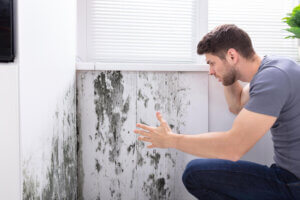Experiencing a flood in your home can feel overwhelming, but knowing what steps to take can make the recovery process easier. Floods not only cause water damage but can also pose safety risks if not handled correctly. Acting quickly and carefully can help minimize damage and keep your family safe.
The first priority is ensuring everyone’s safety before tackling any cleanup or restoration tasks. It’s important to take immediate action, as time plays a big role in how well you can recover after a flood. With the right steps, you can reduce the impact of water damage and start restoring your home to its former state.
Being prepared with a clear plan can turn a stressful situation into something manageable. This guide will walk you through the essential actions to take immediately after disaster strikes, helping you move forward with confidence.
Ensure Personal Safety
Your safety comes first after a flood in your home. The first step is to turn off all electricity and gas lines. Water and electricity don’t mix, so cut the power to prevent electrical hazards. If you can’t safely reach the circuit breaker, contact a professional for help.
Equip yourself with the right protective gear before entering a flooded area. Wear rubber boots and gloves to protect against contaminated water. Floodwater can carry all sorts of bacteria and debris, so proper protection is crucial.
Avoid entering water that is deep or moving swiftly. These conditions can be dangerous, especially if you’re unsure of what lies beneath the surface. Always prioritize your personal safety over belongings in the affected area.
Assess and Document the Damage
Once you’re sure it’s safe, begin assessing the damage to your home. Start with a careful walkthrough of all flooded areas. Take note of any structural damage or compromised items. This initial assessment allows you to understand the scope of the damage.
Next, document everything with photos and videos. Capturing clear images and footage of the affected areas is vital for insurance claims. Ensure that you cover all angles and include close-ups of severely damaged items.
Make a detailed list of all damaged belongings. Include their purchase dates and approximate values if possible. This list will support your insurance claim, helping you received proper compensation. Remember to be thorough to avoid overlooking any damaged possessions.
These steps will help you manage the aftermath of a flood efficiently, keeping your safety in check and ensuring a smooth recovery process.
Start Water Removal
Removing water quickly is essential to reduce further damage. Begin by using buckets to scoop out standing water. For larger volumes, employ a water pump if available. This will help you get rid of the bulk faster and more efficiently.
After removing the water, focus on drying the area to stop moisture from wreaking havoc. Open windows if weather permits, allowing fresh air to circulate. Place fans around the space to help airflow, and set up dehumidifiers to remove moisture from the air. These steps are crucial to speeding up the drying process and preventing mold.
Dispose of items that can’t be saved, like soaked carpets or upholstered furniture. Mold can grow quickly on these materials, leading to health problems and odors. Separating and disposing of these items promptly will help maintain a healthier environment in your home.
Clean and Disinfect Affected Areas
Once water removal is complete, cleaning and disinfecting the area is necessary to eliminate harmful bacteria. Start by scrubbing all accessible surfaces with soap and water to remove dirt and residue. This initial cleaning prepares the surfaces for further disinfection.
Next, a suitable disinfectant should be applied to help kill any bacteria and mold spores. Pay special attention to corners and other hard-to-reach areas where moisture might linger. Disinfecting ensures that any potential health hazards from contaminated water are addressed.
Thoroughly dry all areas after cleaning. Use towels to wipe down surfaces and employ fans and dehumidifiers to make sure no moisture remains. Keeping the area dry helps prevent further mold growth, safeguarding your home’s structure and your family’s health.
Conclusion
Taking swift and efficient action after a flood can significantly reduce its impact on your home. Prioritizing safety, comprehensively assessing the damage, launching water removal efforts, and diligently cleaning and disinfecting the space all play vital roles in recovery. Each step is crucial to restoring your living space to its previous condition.
Flood recovery can be labor-intensive and emotionally taxing, but it’s vital to approach it methodically. Understanding the process helps manage stress and the physical demands involved. Creating a safe and healthy environment free from lingering water damage risks is essential.
When faced with the aftermath of a flood, trust Premier Emergency Water Removal to lift the burden off your shoulders. Our skilled team specializes in swift and effective flood damage repair solutions, ensuring your home is safely restored. Contact us to help return your home to a safe and comfortable state.



